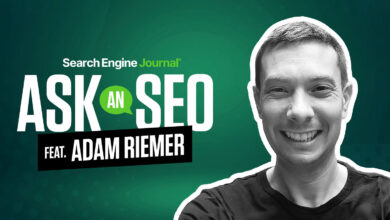Understanding the Distinctions and Benefits of Both

Think CRO and SEO are locked in a battle for your marketing budget? Think again. While they might seem like separate strategies, they’re actually the dynamic duo of the digital world.
In this blog, we’ll explain the key differences between CRO and SEO and show you why using both is the secret weapon your business needs to conquer the online world.
What is Search Engine Optimization (SEO)?
Search engine optimization (SEO) is the art and science of increasing your website’s visibility in organic search engine results pages (SERPs). It’s the process of improving the quality and quantity of website traffic to a website or a web page from search engines. SEO targets unpaid traffic (known as “natural” or “organic” results) rather than direct traffic or paid traffic.
53.3% of all website traffic comes from organic search.
In simpler terms, SEO is about making sure your website shows up when potential customers search for products or services like yours. This involves optimizing your website’s content, design, and technical structure to align with search engine algorithms, ultimately driving more relevant traffic to your site.
Effective SEO involves a multi-faceted approach, with key components including:
-
Keyword research and optimization: This involves identifying the terms your target audience is using in search engines and strategically incorporating those keywords into your website content.
-
On-page optimization: This refers to optimizing the content and HTML source code of individual web pages. It includes elements like:
-
Title tags: Concise and accurate descriptions of a webpage’s content.
-
Meta descriptions: Brief summaries of a webpage that appear under the title tag in search results.
-
Header tags (H1, H2, etc.): Used to structure content and highlight key topics.
-
Content quality: Providing valuable, informative, and engaging content that satisfies user intent.
-
-
Off-page optimization: This focuses on activities outside your website that can improve your search rankings. A major aspect of off-page SEO is link building, which involves acquiring backlinks from other reputable websites.
-
Technical SEO: This involves optimizing the technical aspects of your website to improve its crawlability and indexability by search engines. This includes:
-
Website speed: A fast-loading website provides a better user experience, and Google has stated that page speed is a ranking factor. In fact, 53% of mobile users abandon sites that take longer than 3 seconds to load.
-
Mobile-friendliness: Ensuring your website is easily navigable and readable on mobile devices.
-
Site architecture: Organizing your website’s content in a logical and user-friendly way.
-
By mastering these core elements of SEO, you can increase your website’s visibility, attract more organic traffic, and ultimately drive more leads and sales.
What is Conversion Rate Optimization (CRO)?
Conversion rate optimization (CRO) focuses on turning website visitors into customers. It’s about persuading those who land on your site to take a specific action, whether that’s making a purchase, signing up for a newsletter, or requesting a quote. Think of it as fine-tuning your website to guide visitors toward a desired outcome.
Websites with strong CRO strategies see an average increase in sales of 30%.
CRO involves a deep dive into understanding user behavior and optimizing the website experience. Key elements include:
-
Understanding user behavior: This is the foundation of CRO. It involves analyzing website traffic data to understand how visitors interact with your site. Where do they click? How long do they stay on a page? Where do they drop off? Tools like heatmaps can visually represent user behavior, highlighting areas of interest and potential friction points. Conducting user testing can provide valuable insights into user preferences and pain points.
-
A/B testing: This is a core practice in CRO, involving comparing two versions of a webpage to see which performs better. By making small, controlled changes to elements like headlines, call-to-action buttons, images, or page layouts, you can identify what resonates best with your audience and drives more conversions.
-
Improving website usability: A user-friendly website is crucial for conversions. Clear navigation, intuitive design, and persuasive copywriting all contribute to a positive user experience. For example, simplifying a complex checkout process can significantly reduce cart abandonment rates.
-
Personalization: Tailoring website content and offers to individual users can significantly impact conversions. This might involve showing personalized product recommendations based on browsing history, displaying targeted messages based on location, or offering customized promotions based on past purchases.
By focusing on these key elements, you can optimize your website to better engage visitors, guide them towards desired actions, and ultimately improve your conversion rates.
The Synchronization of CRO and SEO
While CRO and SEO are distinct disciplines, they are not mutually exclusive–they work together synergistically to create a powerful online marketing strategy. Think of it this way: SEO casts a wide net to attract more visitors to your website, while CRO focuses on reeling those visitors in and converting them into customers.
SEO drives more traffic to your website by increasing your visibility in search results. The higher you rank, the more likely people are to click on your link and visit your site. But simply driving traffic is not enough. That’s where CRO comes in. CRO optimizes your website to persuade those visitors to take a desired action, whether that’s making a purchase, filling out a form, or signing up for a newsletter.
Furthermore, a key factor in CRO–improved user experience–also benefits SEO. Search engines like Google prioritize websites that offer a positive user experience. Google’s Page Experience update, for instance, considers factors like page speed, mobile-friendliness, and security when ranking websites.
Creating a website that is easy to navigate, loads quickly, and offers valuable content is key to ranking higher in search results and keeping visitors engaged. By combining Conversion Rate Optimization (CRO) and Search Engine Optimization (SEO), businesses can maximize their online success. Here are some ways in which CRO and SEO can complement each other:
– Landing page optimization: By optimizing landing pages for relevant keywords (SEO) and incorporating persuasive copywriting and clear calls to action (CRO), businesses can attract organic traffic and encourage conversions.
– Website speed and checkout process: Improving website speed benefits both SEO (as a ranking factor) and CRO (by reducing bounce rates and improving user experience). Simplifying the checkout process can also reduce cart abandonment (CRO) while enhancing user experience favored by search engines (SEO).
– Content creation: High-quality content that satisfies user intent is crucial for SEO. By incorporating relevant keywords and providing valuable information, businesses can attract organic traffic. Optimizing content for conversions (CRO) by including clear calls to action and persuasive language can further drive user engagement.
By implementing both CRO and SEO strategies, businesses can create a website that not only attracts visitors but also converts them into customers, leading to increased leads, higher conversion rates, and improved ROI. The benefits of combining CRO and SEO include increased website traffic and leads, improved brand awareness and credibility, higher conversion rates and ROI, and enhanced customer satisfaction and loyalty.
To integrate CRO and SEO in your marketing strategy, start by conducting a website audit, setting clear goals, utilizing analytics tools, continuously testing and optimizing, and considering partnering with a digital marketing agency for expert guidance and support. Remember, CRO and SEO are not competing forces but complementary strategies that, when integrated effectively, can drive digital success for businesses.
Maximize Your Online Potential with CRO and SEO
By optimizing your website for both visibility and conversions, you can maximize your online potential, achieve your business goals, and establish a strong foundation for sustainable growth.
Unlock Your Website’s Full Potential
Ready to unlock the full potential of your website with CRO and SEO? Contact Aspiration Marketing today for a free consultation. Let us help you achieve ongoing growth!
Frequently Asked Questions
1. What is CRO?
CRO stands for Conversion Rate Optimization, which involves improving the percentage of website visitors who take a desired action, such as making a purchase or filling out a form.
2. How does SEO help with website visibility?
SEO, or Search Engine Optimization, helps improve your website’s visibility in search engine results by optimizing content, keywords, and other factors that search engines consider when ranking websites.
3. Why is it important to focus on both visibility and conversions?
By focusing on both visibility and conversions, you can attract more visitors to your website and then encourage them to take action, ultimately leading to increased revenue and growth for your business.
4. How can CRO and SEO work together?
CRO and SEO can work together by ensuring that your website is not only attracting traffic but also converting that traffic into leads or customers through optimized design, content, and user experience.
5. How can Aspiration Marketing help with CRO and SEO?
Aspiration Marketing can provide expert guidance and services to help you optimize your website for both visibility and conversions, ultimately maximizing your online potential and driving sustainable growth for your business.




